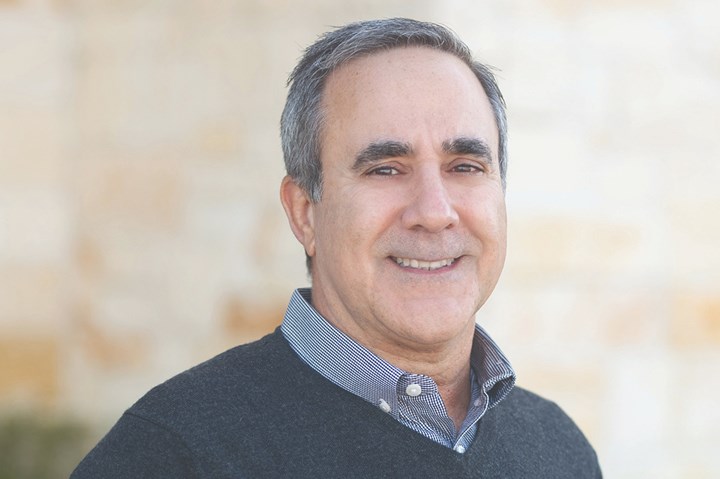The Best Method for Coating Full-Size Aircraft
John Owed from Carlisle Fluid Technologies analyzes the difference between using air-assisted airless, air spray and other technologies for coating a full-size aircraft. Which is better?
Q: Our company uses an air-assisted airless applicator to coat full-size aircraft. I have been tasked with speeding up our finishing process and am looking for viable solutions to achieve this goal. Would air spray applicators or any other technology offer any advantage?
A: For the applications you described, air assisted airless (AAA) is typically
the atomization technology of choice. AAA can provide relatively high fluid delivery rates while achieving a good overall quality finish which normally lends itself to aerospace applications. It does not yield a Class A finish with high gloss and DOI as expected on a car hood or motorcycle fuel tank. However, it provides a finish that meets or exceeds the requirements for aerospace applications.
AAA applicators use hydraulic atomization to mechanically shear liquid coatings into small droplets, which involves moving the coating from its supply container to the applicator using a high-pressure pump. The material is forced under high pressure through a fixed orifice. The size and angular cut of the orifice (that looks like a “cat-eye”) combined with the pump- generated fluid pressure determine the size of the spray pattern. A low volume of “assist” air is then added through the air cap to provide uniformity across the full spray pattern.
Based on the process described above, AAA yields a relatively soft spray pattern with increased transfer efficiency over normal air spray technology. This aids in reducing overspray, which can lead to contamination and dry spray issues.
Following is a chart that compares AAA and air spray technology:
|
Air-Assisted Airless |
Air Spray |
|
|
Fluid Supply Type |
High Pressure Pump |
Gravity, Suction or Pressure |
|
Fluid Supply Operating Pressure |
500 – 2,500 psi (34 - 170 bar) |
0 - 300 psi (0 - 44 bar) |
|
Atomization Method |
Mechanical Shearing |
Air |
|
Spray Pattern Size |
Fixed, 6 – 16" (150 - 400 mm) |
Variable 3 - 14" (75 - 350 mm) |
|
Ability to Finesse / Feather |
No |
Yes |
|
Speed of Application |
High |
Moderate |
|
Fluid Delivery Rate |
12 - 40 oz/min (350 - 1200 ml/min) |
1 - 16.5 oz/min (30 - 500 ml/min) |
For coating large surface areas efficiently, AAA technology is a great selection. If not currently using electrostatic AAA technology, then consider it as a potential improvement for reducing process time. The electrostatic process introduces a negative charge at the point of atomization. The charged coating particles seek ground and are attracted to the product being sprayed. This improves the overall transfer efficiency, which improves the deposition rate and would lend to faster movement.
Air spray technology might offer process speed benefits when working with smaller coating volumes or applications requiring finesse. Air spray is available in pressure, suction or gravity feed. With all three fluid supply methods, the atomized droplet is created by impinging air on a column of fluid, then adding additional air to shape the spray pattern into the desired size. Air spray offers the ability to easily vary the spray pattern size and fluid delivery rate by “feathering” the spray gun trigger that controls the volume of paint flow.
Looking beyond spray applicators, you might be able to identify ancillary functions that can be improved to speed up the finishing process. For instance, if you are currently manually mixing two component materials (hot potting), consider using a plural component metering system. These systems will dynamically mix on demand the resin and catalyst, which reduces waste and improves overall finish quality based on the consistency of the mix and viscosity. Additionally, the machine with the use of a gun flush box can automate the applicator flushing, which frees up the operator to attend to other tasks.
About the Author
John Owed
John Owed is the finishing SBU director at Carlisle Fluid Technologies. Visit carlisleft.com.
Related Content
Aerospace Conductive Coating Provides Adhesion, Fluid Resistance
Conductive coating (CM0485115) provides a high-conductivity solution for dissipating static on aluminum and composite aircraft.
Read MoreA Smooth Transition from One Anodizing Process to Another
Knowing when to switch from chromic acid anodizing to thin film sulfuric acid anodizing is important. Learn about why the change should be considered and the challenges in doing so.
Read MoreEliminating No-Value-Added Services Adds Value for Customers
Answering questions about how to best meet customer needs led this Products Finishing Top Shop to stop using trucks to provide value-added services and instead, start offering in-house solutions.
Read MoreAkzoNobel Uses VR for Training Airline Apprentices
The virtual reality technology provides a paint booth and spray gun that enables trainees to work and master their skills without losing parts in the process.
Read MoreRead Next
Air Spray vs. Air-Assisted Airless Technology
Payton Cozart, Product Manager, Carlisle Fluid Technologies, examines the advantages and disadvantages of AAA applicators and discusses alternatives.
Read More6 Cost Considerations for Aircraft Paint Booths
Ken Schaer of Global Finishing Solutions discusses things you should keep in mind when investing in an aircraft paint booth.
Read MoreEpisode 45: An Interview with Chandler Mancuso, MacDermid Envio Solutions
Chandler Mancuso, technical director with MacDermid Envio discusses updating your wastewater treatment system and implementing materials recycling solutions to increase efficiencies, control costs and reduce environmental impact.
Read More













.jpg;maxWidth=300;quality=90)









